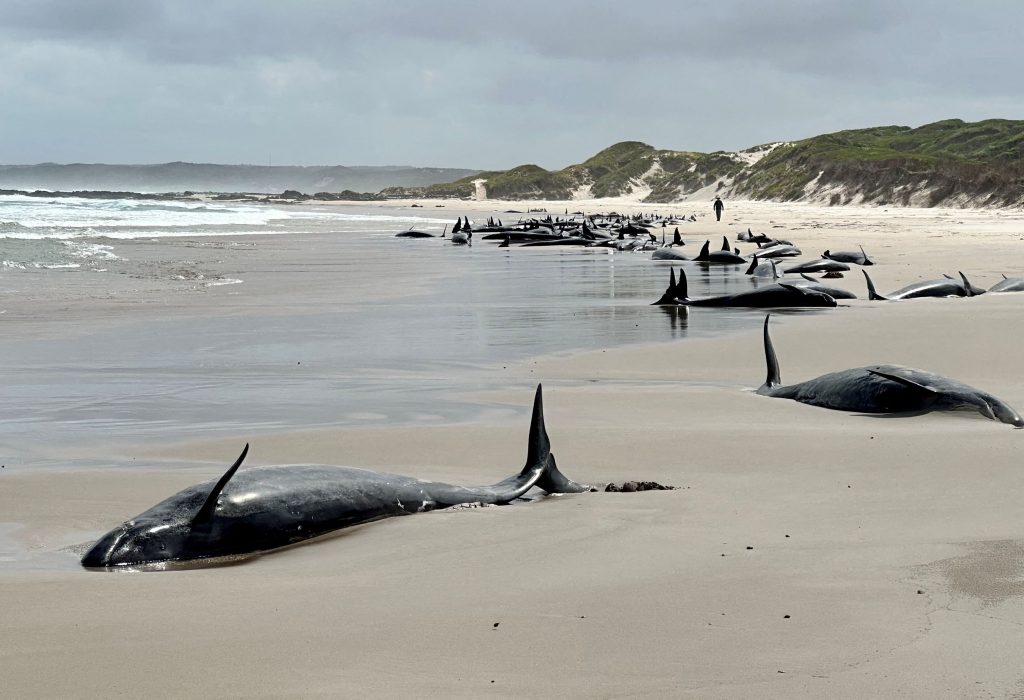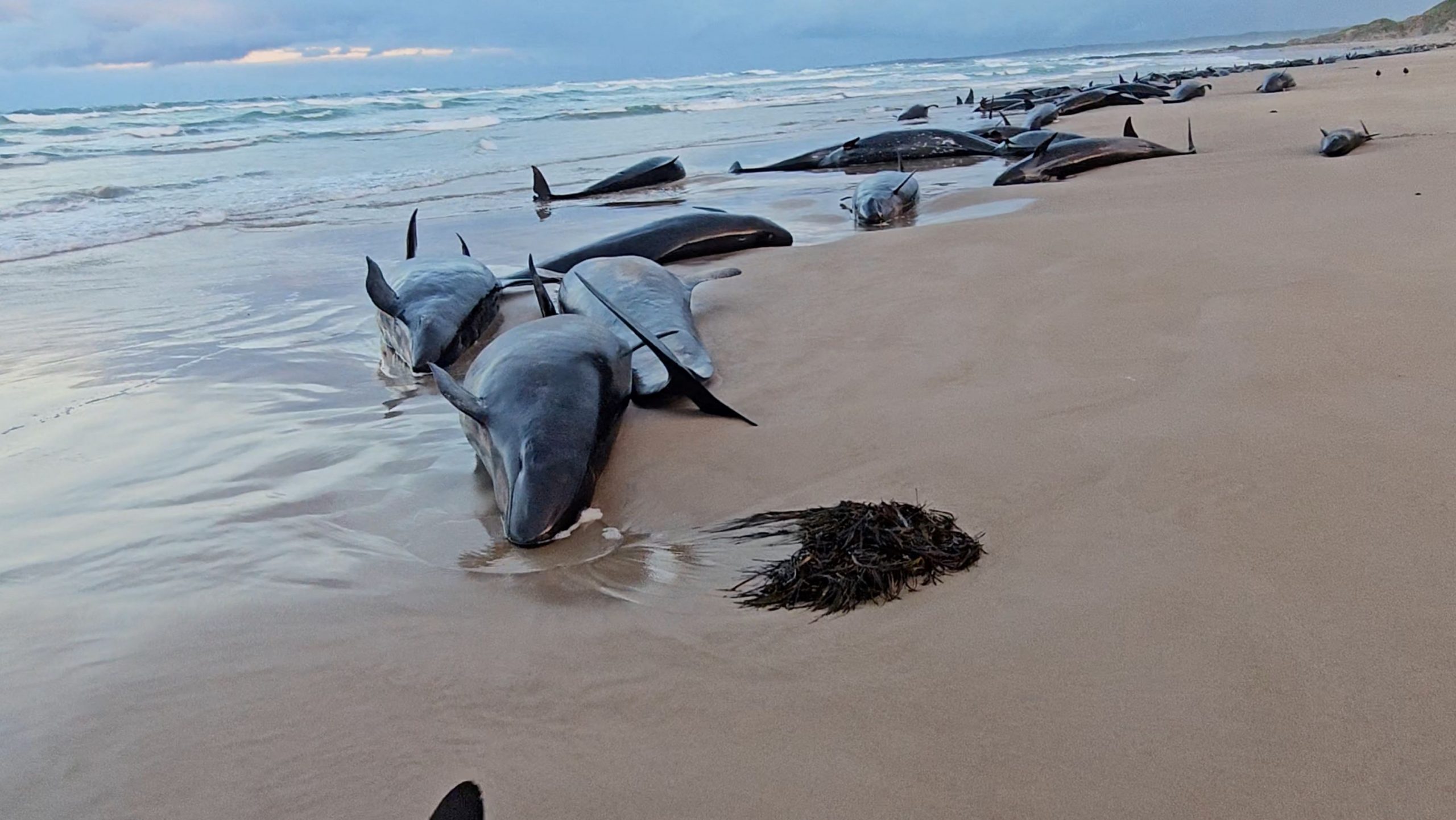In a tragic event on Tasmania’s northwest coast, Australian authorities have commenced the euthanasia of dozens of false killer whales stranded on a remote beach. The mass stranding occurred earlier this week near Arthur River, approximately 250 miles from the state capital, Hobart. The event involved over 150 endangered dolphins, commonly referred to as false killer whales due to their resemblance to orcas.
According to Reuters, the disruptive weather conditions and the isolated location have severely hindered rescue efforts, leading to the difficult decision to humanely end the suffering of the remaining animals. As of Thursday morning, 27 whales had been euthanized, with 38 still alive. The euthanasia process is expected to conclude late Thursday. False killer whales can grow up to 20 feet long and weigh up to 3,000 pounds, making a rescue mission to return them to rough waters particularly challenging.

Whales are stranded near Arthur River on Tasmania’s west coast, Australia, in this picture obtained on February 19, 2025. AAP/Supplied by Department of Natural Resources and Environment Tasmania via REUTERS
The incident has posed significant trials due to the site’s inaccessibility, adverse ocean conditions, and specialized equipment being required to reach the area. Brendon Clark of the Tasmania Parks and Wildlife Service noted that attempts to refloat the whales proved to be a difficult and dangerous task for staff.
This event marks Tasmania’s first large mass stranding of false killer whales in approximately 50 years. Local authorities plan to conduct investigations to determine the cause of the stranding and are collaborating with the local Aboriginal community regarding the disposal of the carcasses.
The rippling emotional toll on the local community and responders is profound, as efforts to save the stranded whales were thwarted by treacherous conditions. Several posts on X have echoed the devastation from communities domestically and abroad. The decision to proceed with euthanasia emphasizes the harsh realities faced in wildlife rescue operations, particularly in remote and environmentally challenging locations.



